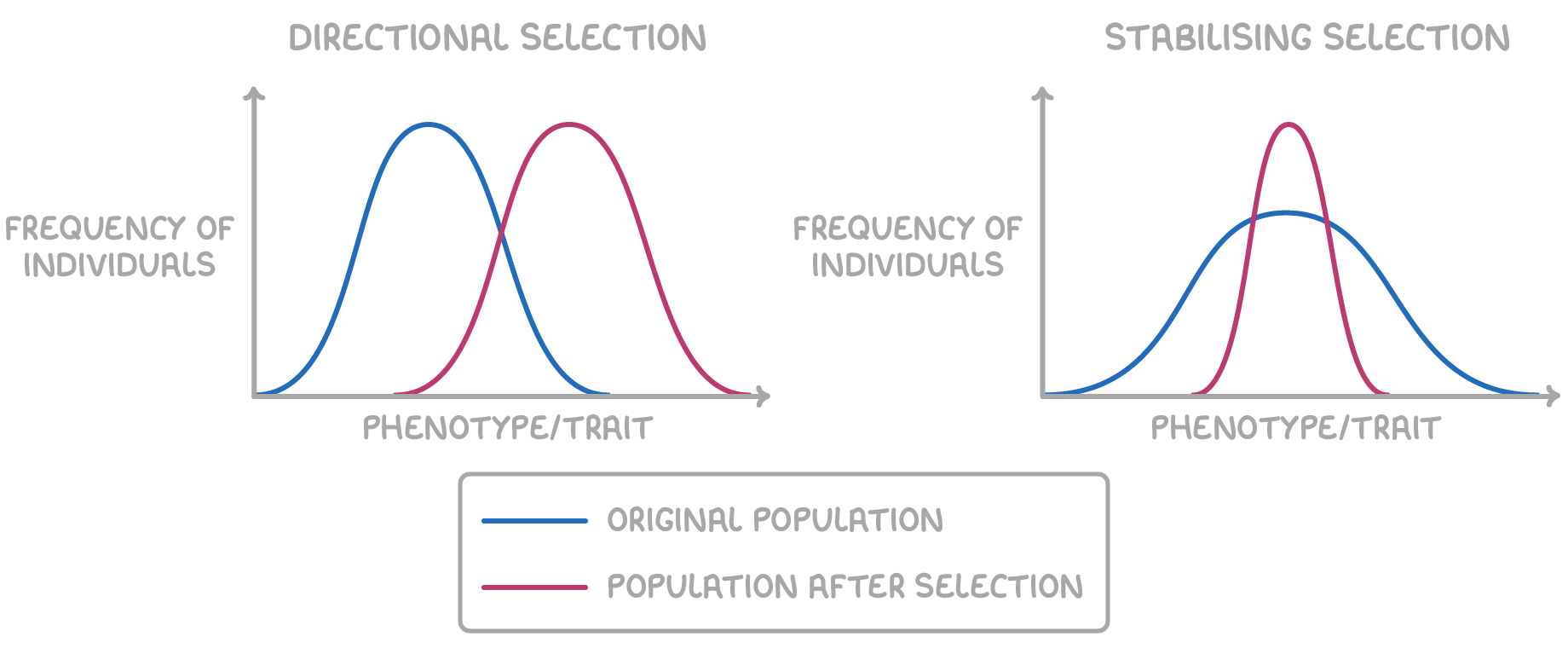Natural Selection
This lesson covers:
- The steps involved in natural selection
- An example of natural selection in bacteria
- Directional and stabilising selection
How natural selection works
An allele is a variant form of a gene. Different alleles can result in different observable traits.
Genetic diversity is the total number of different alleles in a population. This leads to variation as different combinations of alleles mean different proteins are produced, resulting in different characteristics.
Genetic diversity influences natural selection as organisms with advantageous traits are more likely to survive, reproduce, and pass on their alleles, influencing the gene pool. The more successful an organism is at reproducing, the more likely its alleles will be passed on to the next generation, increasing the allele frequency.
The process of natural selection includes these key steps:
- There is variation in characteristics within a species.
- More genetic variation emerges within a population due to random mutations.
- Individuals with alleles that code for traits that are advantageous for survival are more likely to reproduce.
- These advantageous alleles are passed down to offspring.
- Over time, these beneficial alleles become more common in the population.
This mechanism leads to populations becoming more adapted to their environment over generations.
A modern example of evolution in antibiotic-resistant bacteria
Natural selection is an ongoing process that enables organisms to adapt to environmental changes.
The development of antibiotic resistance in bacteria, such as MRSA, is a clear example of natural selection in action.
It occurs through the following stages:
- Some bacteria develop random mutations that provide resistance to antibiotics.
- When antibiotics are used, only the resistant bacteria survive, while the others die off.
- The resistant bacteria reproduce, passing on resistant alleles to their offspring.
- Over time, the proportion of resistant alleles increases, leading to mostly resistant bacteria.
This resistance complicates treatment options, increases healthcare costs, and raises mortality rates in humans.
Types of selection
There are two types of selection that you need to know about at this point in the course: directional selection and stabilising selection.

| Type of selection | Favoured phenotypes | Effect on normal distribution curve | Example |
|---|---|---|---|
| Directional selection | Extreme phenotype | Shifts curve in the direction of the favoured extreme | Antibiotic resistance in bacteria, where the resistant bacteria survive and reproduce |
| Stabilising selection | Average phenotypes | Narrows the curve | Human birth weight, where infants of average weight have higher survival rates |